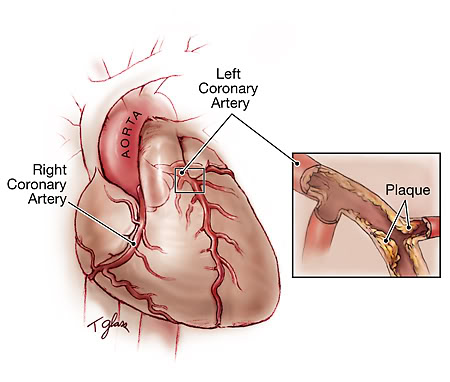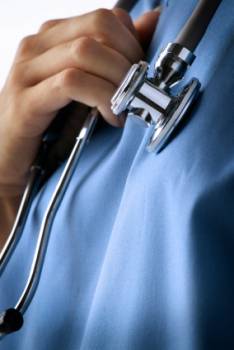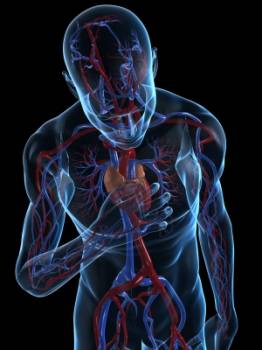Hypertension
 Hypertension, otherwise known as high blood pressure, is a fairly common chronic disease in the community. In Singapore, about 1 in 5 adults is hypertensive, and this figure is set to rise as our population ages.
Hypertension, otherwise known as high blood pressure, is a fairly common chronic disease in the community. In Singapore, about 1 in 5 adults is hypertensive, and this figure is set to rise as our population ages.
It is often called a “silent killer” because most people do not experience any symptoms even when their blood pressure is high. Many discover that they have hypertension only when complications develop, such as after a stroke or heart attack.
OVERVIEW
The blood pressure measured is the pressure within the blood vessels, as blood is pumped by the heart around the body. This pressure is highest (“systolic” pressure) when the heart contracts to push blood out into the arteries. It is lowest (“diastolic” pressure) when the heart relaxes to fill up with blood again from the venous system.
 CAUSES
CAUSES
1. ESSENTIAL HYPERTENSION
Up to 90-95% of hypertension is classified as Primary, or Essential Hypertension, in which there is no identifiable cause. Whilst there is no direct cause for the raised blood pressure, there are many risk factors such as a positive family history of hypertension, sedentary lifestyle and obesity.
2. SECONDARY HYPERTENSION
In the remaining 5-10%, an identifiable cause is present. This type of hypertension is known as Secondary Hypertension, and it is important to have it differentiated from the primary form, as the underlying cause will need to be treated.
Conditions which can result in hypertension include:
• Endocrinological conditions:
- Primary aldosteronism (Conn's syndrome)
- Cushing's syndrome
- Phaeochromocytoma
- Oral contraceptives
• Kidney diseases:
- Renal artery stenosis
- Reflux nephropathy
• Coarctation of the aorta
• Immune disease eg. Polyarteritis nodosa
• Drugs eg. NSAIDS (non-steroidal anti-inflammatory drugs) and steroids.
• Pregnancy
SIGNS & SYMPTOMS
One of the most dangerous aspect of hypertension, is that there are very few symptoms, if any, and many people go around for years with elevated blood pressures without even knowing it. That is why, hypertension is commonly known as the "silent killer".
The only way to find out if you have hypertension, is to have your blood pressure measured on a regular basis.
If your blood pressure is extremely high, you may experience the following symptoms:
• Severe headaches
• Vision problems
• Chest pains
• Difficulty breathing
• Palpitations
• Fatigue or confusion
• Blood in the urine
• Pounding sensation in the chest, neck or ears
If you do have any of these symptoms, you should see your doctor immediately, because you may be suffering from a hypertensive crisis which could lead to a stroke or heart attack.
DIAGNOSIS
A person's blood pressure can be affected by many factors, such as acute illness, stress, exercise and smoking. Blood pressure levels also vary continuously throughout the day. Hence, care should be taken to ensure that the pressure readings obtained are that of your usual pressure.
Before you have your blood pressure measured at the doctor's office, try to ensure that:
• You have rested for at least 5 min before a reading is measured,
• You have not consumed caffeine for 4-6 hours
• You have not smoked for at least 2 hours
• You have not eaten or exercised for at least half an hour
The diagnosis of hypertension is not made on the basis of a single measurement. So, you would expect your doctor to ask you to come back for repeat measurements.
(Adapted from Joint National Committee JNC-7)
| Classification | Systolic Pressure (mmHg) |
Diastolic Pressure (mmhg) |
| Normal | < 120 |
< 80 |
| Pre-hypertension | 120 - 139 |
80 - 90 |
|
Hypertension -Stage 1 |
140 - 159 |
90 - 99 |
| Hypertension - Stage 2 |
160 and above | 100 and above |
There is a role for home blood pressure monitoring, as it can provide measurements of a person's blood pressure at different times throughout the day, and in a more relaxed environment outside a doctor's office. As many as 25% of people suffer from what is known as “White Coat Hypertension”, in which their blood pressures are high only when in the doctor's office, and normal at other times.
If your doctor suspects that you may have secondary hypertension, he may perform some laboratory tests to confirm or rule them out. Baseline tests are also performed, to look for possible complications as well as contributory risk factors for coronary artery disease (in particular, diabetes and hypercholesterolemia).
COMPLICATIONS
 Over time, high pressures lead to hardening and narrowing of the arteries, known as atherosclerosis. When this happens in various organs of the body, the following can result:
Over time, high pressures lead to hardening and narrowing of the arteries, known as atherosclerosis. When this happens in various organs of the body, the following can result:
• Coronary Heart Disease – ischaemic heart disease and heart attacks
• Heart Failure – from over-taxing of the heart, having to pump constantly against high pressures
• Stroke
• Kidney Failure
• Peripheral Artery Disease – causing ischaemic pain on walking
It is therefore important to diagnose and treat hypertension, with the view of normalizing pressures, in order to prevent these end-organ complications.
MANAGEMENT
The first step to management is to make changes to your lifestyle, regardless of whether or not you require medication to control your hypertension. You should also work with your doctor to establish treatment goals.
LIFESTYLE CHANGES
• Weight reduction and regular aerobic exercise
• Reduced salt intake in diet
• Reduce and ideally stop smoking and alcohol consumption
• Reduce and manage stress
MEDICATION
Your doctor may prescribe medication to lower your blood pressure to a target level, based on your risk profile. These are the main types of blood pressure medication:
• Diuretics – help your body get rid of extra sodium and fluid
• Beta blockers – block the effects of adrenaline
• Alpha blockers – help your blood vessels stay open
• ACE inhibitors – block the production of angiotensin II, a chemical that constricts blood vessels
• Calcium channel blockers – prevent your blood vessels from constricting by blocking calcium from entering the cells
• Angiotensin receptor blockers – similar to ACE inhibitors, except that they impede the action of angiotensin-II instead of stopping its production
TREATMENT GOALS
In general, more stringent blood pressure control is required in diabetics and those with end-organ damage.
The Singapore Ministry of Health Clinical Practice Guidelines has recommended that optimal BP treatment target levels are < 130/85 mmHg in young, middle aged hypertensives and in patients with diabetes. For the elderly, the recommended target is < 140/90 mmHg.
It is worth noting, that with every 10 -14 mmHg reduction in systolic blood pressure, and 5 – 6 mmHg reduction in diastolic pressure, there is about a 40% reduction in stroke risk and a 14% reduction in coronary artery disease risk, although this risk reduction will vary with your overall risk profile.
Further Reading
The article above is meant to provide general information and does not replace a doctor's consultation.
Please see your doctor for professional advice.
